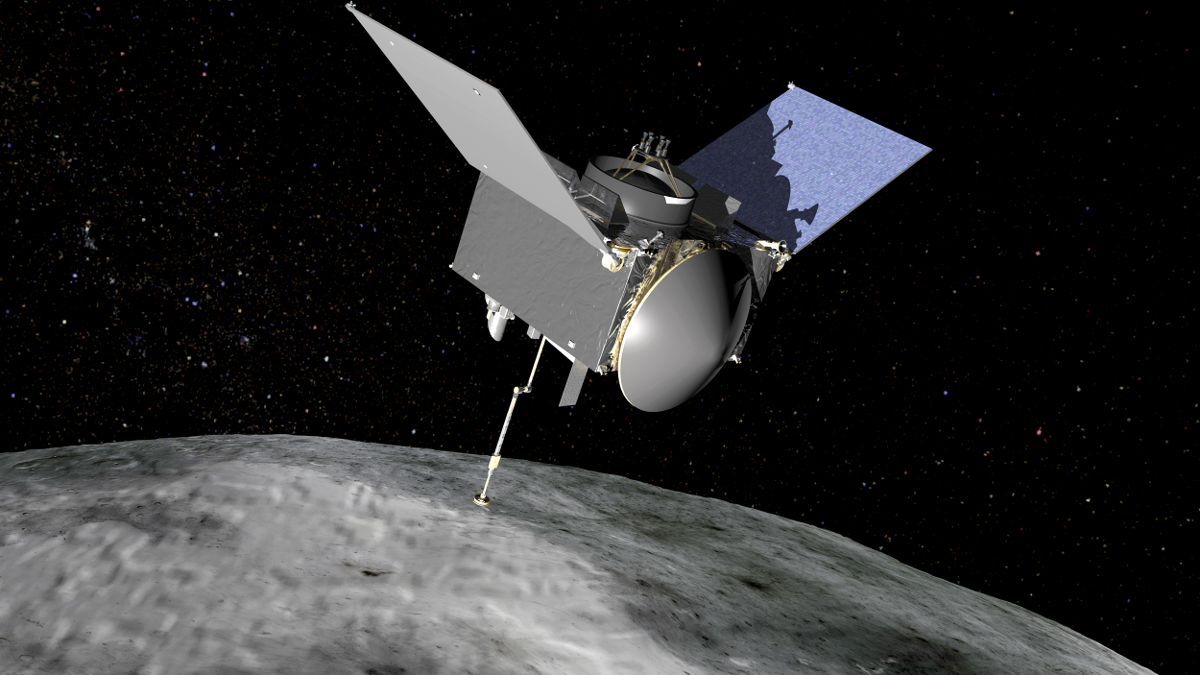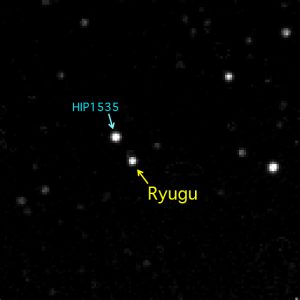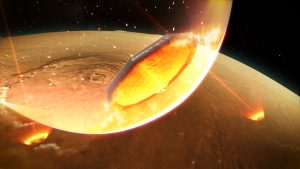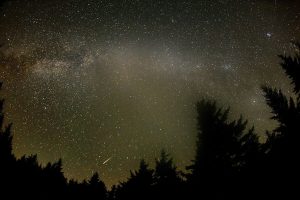
The X-factor: The collaboration between Hayabusa2 and OSIRIS-REx
“You cannot sign an international collaboration agreement and expect everything to just work,” says Heather Enos, Deputy Principal Investigator for the NASA OSIRIS-REx mission. “Each country will have different policies that the teams have to be pro-active in navigating.”
The Origins, Spectral Interpretation, Resource Identification, Security-Regolith Explorer —more palatably known as OSIRIS-REx— was launched on September 8th, 2016 to analysis and collect a sample from asteroid Bennu.
It is an objective that resembles our own Hayabusa2 mission here at ISAS/JAXA, where excitement is mounting for the spacecraft’s arrival at asteroid Ryugu this summer. Both Hayabusa2 and OSIRIS-REx are ‘sample return’ missions that will collect soil from different asteroids to bring back to Earth. But what are the advantages of having two asteroid missions and how are NASA and JAXA collaborating?
“Two science missions isn’t just twice as good,” Enos explains. “It’s two times a factor of ‘X’ as good! You’ve got so much talent, information and diversification within the teams that your knowledge base can explode.”
Hayabusa2 and OSIRIS-REx are each visiting ‘carbonaceous’ or ‘C-type’ asteroids. This class of space rock is thought to a be a largely unaltered remainder of our Solar System formation. This makes C-type asteroids time capsules of the material that formed the planets, including the Earth. Understanding their minerals and chemistry gives us a glimpse of what it takes to form an Earth and maybe even the starting point of life.
A difficulty faced by scientists on sample return missions is knowing if the material gathered is truly representative of the celestial body. Are we looking at the same minerals that formed the planets, or an unusual patch of this one asteroid? Hayabusa2 will mitigate this issue by landing three times in different locations around asteroid Ryugu. But this still runs the risk that Ryugu itself is somehow atypical. Comparison with the OSIRIS-REx sample from a completely different asteroid makes it far more likely we are studying the bulk material of the early Solar System.
For this reason, the JAXA Hayabusa2 team and the NASA OSIRIS-REx team are sharing samples. One year after the Hayabusa2 capsule has returned to Earth in 2020, JAXA will deliver 10% of the collected sample to NASA. OSIRIS-REx is expected to collect a larger soil sample during a single collection and will pass 0.5% to JAXA once the spacecraft returns to Earth three years later.

This is the first sighting of asteroid Ryugu, the destination of Hayabusa2, spotted by Hayabusa2 on February 26, 2018. Credit: JAXA, University of Tokyo, Kochi University, Rikkyo University, Nagoya University, Chiba Institute of Technology, Meiji University, University of Aizu and AIST.
Yet, the collaboration between the two mission teams does not start with the final sample exchange. Scientists from JAXA are part of the OSIRIS-REx science team and vice versa, ensuring knowledge is shared between the two groups from mission planning to the first analysis of the returned samples.
“One of the tools we’re sharing is the software to generate a map of the asteroid shape,” says Enos. “This gives a three dimensional model to help with the selection of the landing site.”
The software creates a model for the asteroid based on images from the spacecraft optical cameras. This is combined with altitude data available from the spacecraft laser altimeter, which records the time for light to be reflected from the asteroid surface to determine small variations in distance corresponding to the surface topology. The package was designed by researchers at NASA and has previously been used to map the surface of the dwarf planet, Ceres, on the NASA Dawn mission and that of Mercury on the Messenger mission. However, neither of these large planetary bodies are expected to be similar to the asteroid Bennu. A much more similar landscape will be Hayabusa2’s destination, asteroid Ryugu.
Hayabusa2 is expected to get a good view of Ryugu from June this year, three months before OSIRIS-REx will be able to see Bennu clearly. The OSIRIS-REx and Hayabusa2 teams therefore plan to work closely together to develop the asteroid model for Ryugu. It is then a much smaller step to adapt the model for Bennu in September. The initial plan is to construct a low resolution model that will be improved as the spacecraft approaches the asteroid and the available data increases. This higher resolution model will be an important aid in selecting the sampling site for the missions.
While both missions will gather material from the asteroid surface, their collection methods are very different. OSIRIS-REx will orbit asteroid Bennu, getting steadily closer until its 3m arm can reach the surface. The spacecraft is therefore never considered to land on the asteroid; rather it hovers in what is actually a very tight orbit.
By contrast, Hayabusa2 will not orbit Ryugu, but instead gather material with a 1m sampling horn as the spacecraft goes through a brief decent and landing phase.
With other members of the OSIRIS-REx team, Enos visited ISAS in December. She describes such meetings as the key to making any international collaboration a success.
“We want everything to be about the science and what we can accomplish together,” she explains. “But there are bureaucratic restrictions governing the exchange of information. It’s frustrating but you need to be aware of the barriers so you can plan to avoid them.”
Barriers can also come from cultural differences between agencies. The large size of NASA accompanies a large bureaucracy of paperwork, requiring detailed plans very early in the mission timeline. JAXA’s smaller size allows more immediate communication between all members, often permitting a less regimented regime.
Both methods have advantages. For example, there is significantly less data currently available on asteroid Ryugu, compared with Bennu. The Hayabusa2 team therefore have to wait for the spacecraft’s approach to Ryugu before they can plan with the same level of information as their OSIRIS-REx counterparts. In this situation, it helps to have a flexible plan that is easily changeable late on in the mission.
On the other hand, detailed plans help with international collaborations where multiple agendas need to be accommodated.
When asked whether the difficulties are worth it, Enos is very clear. “Absolutely. I’m hoping the partnership between NASA and JAXA will only continue to grow.”
 Previous Post
Previous Post Next Post
Next Post






